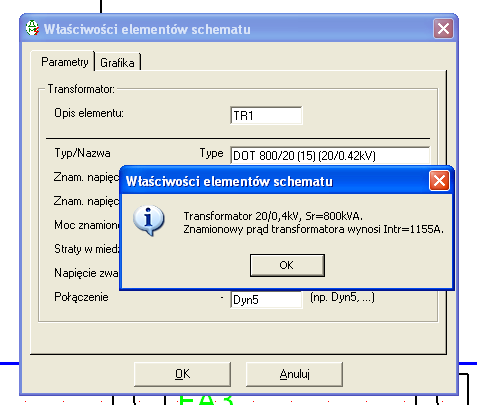Hello
I have two 15/0.4 kV transformers at work with a capacity of 800kVA each. During the last survey and measurements, it was recommended to hang plates in the transformers' compartments with the transformers' short-circuit power and with the cross-section of the earthing switches. On the RWN switchgear we have such a plate posted.
I'm not sure if I'm counting this power correctly, so please have someone check it for me and if necessary help me calculate it.
From the documentation of the transformer and the nameplate I read that:
short-circuit voltage Uz = 5.74%
nominal current In = 1155A
I assumed, That since during a short circuit at Uz I have a current on the secondary side In then at full voltage on the primary side when the secondary side is shorted, the current will be Is = 100/Uz * In. This gives Iz = 34.843 kA and multiplying this by the voltage on the secondary side of 400V I would get Sz = 13.937 MVA or about 14MVA.
Did I approach the subject correctly or should it be calculated in a different way?
I'm counting on help
Greetings
I have two 15/0.4 kV transformers at work with a capacity of 800kVA each. During the last survey and measurements, it was recommended to hang plates in the transformers' compartments with the transformers' short-circuit power and with the cross-section of the earthing switches. On the RWN switchgear we have such a plate posted.
I'm not sure if I'm counting this power correctly, so please have someone check it for me and if necessary help me calculate it.
From the documentation of the transformer and the nameplate I read that:
short-circuit voltage Uz = 5.74%
nominal current In = 1155A
I assumed, That since during a short circuit at Uz I have a current on the secondary side In then at full voltage on the primary side when the secondary side is shorted, the current will be Is = 100/Uz * In. This gives Iz = 34.843 kA and multiplying this by the voltage on the secondary side of 400V I would get Sz = 13.937 MVA or about 14MVA.
Did I approach the subject correctly or should it be calculated in a different way?
I'm counting on help
Greetings



